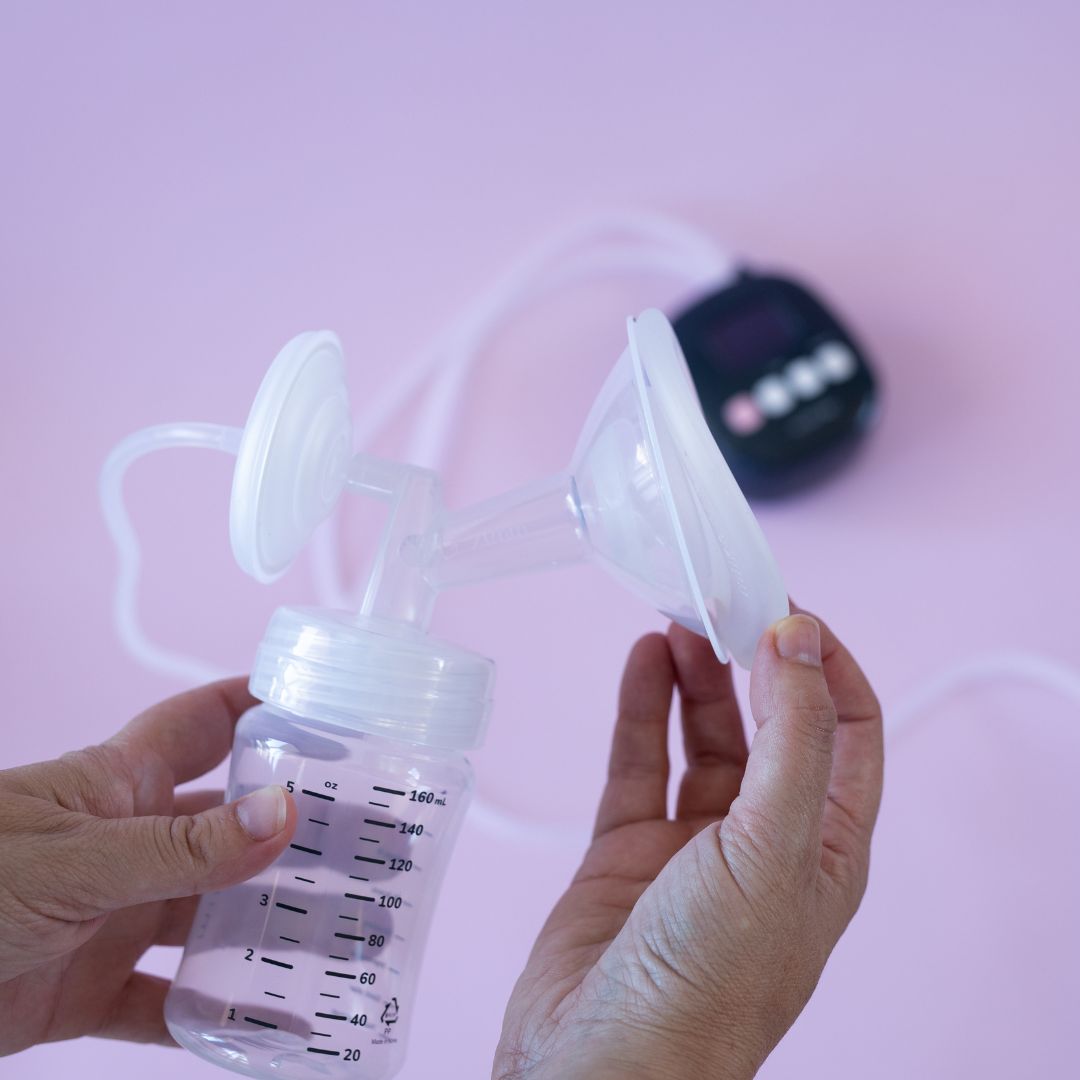Our Comfortably Pumping Facebook group are always asking us some great questions about pumping schedules, so we've compiled these frequently asked questions into one place!
Most of these questions are answered for people who are mostly pumping to feed their baby (and not feeding much at the breast/chest). If you're in this situation, schedules can be a simple way of making sure that you consistently remove milk, which will help you settle into a rhythm of producing milk.
If you're mostly feeding your baby at your breast or chest, a schedule may not be the best option for you. Why? Well, babies don’t follow schedules. Babies cluster-feed, have growth spurts and go through changes in their feeding patterns. This article from Emma Pickett IBCLC for UNICEF, talks you through all the reasons why schedules aren’t great to follow for breastfeeding a baby directly. It follows that pumping schedules may not be great to follow either.
If you are needing to, or planning to make and follow a schedule, read on for more, and don't forget to check out our pumping schedules 101 for the detail.
1. How many sessions should I pump per day?
The number of times you need to pump will depend on your baby’s age, your reason for pumping, amount of support you have and your mental and physical health. Speak with your lactation consultant or doctor if you're unsure.
Typically, people tend to start with 8-10x sessions for a newborn, and reduce over time as your baby grows, starts solids, and eventually weans. You can add sessions if you’re trying to increase supply, and you can reduce sessions if you’re trying to reduce your supply.
For example, if you have a newborn and you have support, you might start at 10x sessions per day. Once your supply regulates, after several weeks or even months, you might drop another session or two. When you baby starts solids, you might reduce to 5x per day. If you return to work, you might reduce to 2-4x per day. And then when you wean, then you’re heading down past 1x to …eventually, 0x.
2. How long should I pump each session?
There doesn’t seem to be a referenced or consistent recommended length of time for a pump session.
Some people suggest 15 minutes, others suggest 30. Some recommend pumping in total 120 minutes a day, others up to 240 minutes. Some suggest you pump until your milk starts to slow or stop. Others suggest that you pump past that point to try to get a second letdown.
All this conflict can be, well, conflicting.
Speak with your lactation consultant or doctor to find the best schedule for you.
You may choose to start by working out the total amount you think you can spend pumping in a day based on your support situation, and work backwards. If you’re pumping to initiate supply, and you have good support, then you might be able to sustain 180 minutes per day, and 10 sessions. This means each session should be just under 20 minutes.
Use that as a starting point, and then adjust your sessions based on how your breasts seem to be behaving. For example, if it only takes you 5 minutes to get your milk out, and nothing is happening for the next 15 minutes, then just stick with 5 minutes. If you find that you feel like you have more left in the morning after 20 minutes, then perhaps make the morning sessions longer. If you can’t get through the night without discomfort from full breasts, pump more at night.
If you are dropping the number of sessions, you might consider increasing the length of each session so that you’re pumping the same amount in total each day.
Remember, your breasts may be different. They’re sisters, not twins. Plenty of people have one large breast, which produces most of the volume, and another which is a little more relaxed.
3. What if I’m nursing as well as pumping?
Many people mixed feed, meaning that they do a combination of nursing and pumping, and supplementing with formula too. You can use the schedules here in these situations, by simply replacing a pump session with a nursing or bottle-feeding session.
**warning: be aware that feeding a baby directly at the breast is different from pumping. Where a schedule might help you with pumping, it is not necessarily the best thing to be doing if your goal is to nurse at the breast more. This article from Emma Pickett IBCLC for UNICEF, talks you through all the reasons why schedules aren’t great to follow for breastfeeding a baby directly.
If you find yourself on the pump, but you’d prefer to be feeding at the breast, then try to find a lactation consultant who can help you.
4. Where can I find an evidence-based schedule?
As far as we can tell, there is no published research on pumping schedules.
There is research on pump settings, and even the effect on milk volumes from pumping both or one breast at once, and there is also research on how schedules affect feeding directly at the breast. However, most research that mentions pumping schedules is usually talking about the challenges that people have returning to work, and being able to schedule in regular feeds, rather than the effectiveness of schedules themselves.
🤷🏼♀️ Do you know of any research in this area, we’d love to hear from you!
So to answer your questions about when, how often, and how long to pump for, we have trawled the forums and websites, and compiled their advice and practical tips into one spot.
These schedules were developed after looking at various forum comments from people who have exclusively pumped for some time, personal experience, and recommendations from private-practice lactation consultants.
We are not lactation consultants or doctors here at Milkdrop. But we do help women with pumping comfortably, having experienced it ourselves. Please see your lactation consultant or doctor for advice for you and your situation.
5. Can I pump and dump?
Pump and Dump is a popular concept out there. Probably because it rhymes.
The idea is that you can ‘pump’ your breast milk and then ‘dump’ it out. Some people do this if they have an alcoholic drink or take certain medication.
The contentious part about pump and dump is that it is not always necessary, and sometimes pumping and dumping can affect your breastfeeding journey. For example, if you have trouble with supply.
We will expand this section with a review and links to the literature.
For now, contact your lactation consultant or doctor, or InfantRisk with questions.
Want more? Check out our other posts on pumping schedules, including:
- Pumping schedules 101
- How to build your own pumping schedule (and why you'd want to)
- Pumping Schedules for Returning to Work



